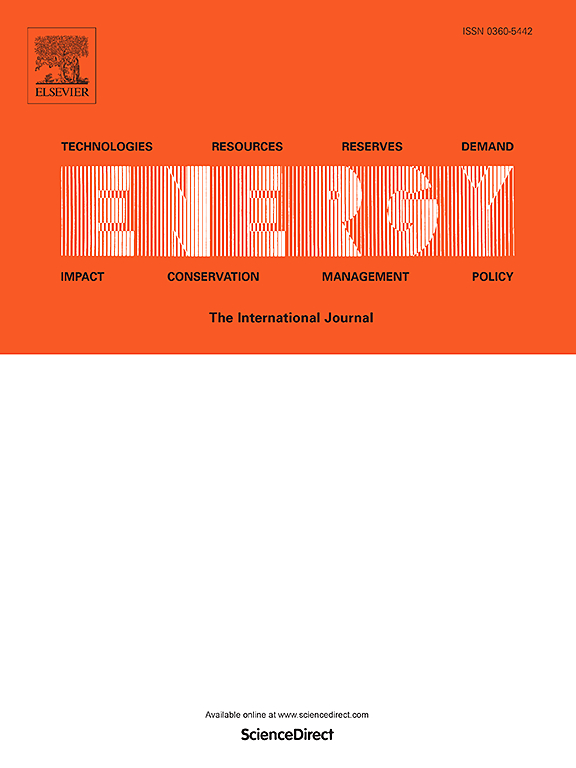Optimization of structure-material-gap for soft gaskets used in a refrigerator-freezer
IF 9
1区 工程技术
Q1 ENERGY & FUELS
引用次数: 0
Abstract
As a key component connecting the door and cabinet in refrigerator-freezers, gaskets play a vital role in sealing and thermal insulation. Previous studies did not systematically research the factors about gasket optimizations. This study focuses on optimizing three single-factor of the gasket to reduce its heat load: structure, material, and gap. For each factor, two optimizations were proposed. Numerical simulations were conducted to evaluate the improvement of the optimized gasket in thermal insulation performance. The optimized effect of two structurally optimized gaskets is 34.89 % and 31.60 %. The optimized effect of two material optimized gaskets using foamed PVC and hollow microsphere PVC is 8.12 % and 9.11 %. The optimized effect of two optimized gaps is 3.18 % and 9.84 %. Heat transfer equations were then established to reveal the five inherent parameters contributing to the reduction in heat load of the gasket. The study further proposed dual-factor and triple-factor combined optimizations, analyzing the effects of structure-material, structure-gap, material-gap, and structure-material-gap optimizations using the heat transfer equation. Numerical simulation results showed the average optimized effect of structure-material was 39.58 %, structure-gap was 38.67 %, material-gap was 14.37 %, and structure-material-gap was 44.31 %. The study explained the attenuation characteristics of the effects of the various combined optimizations from the above numerical simulation results. Finally, in experiments of the reduction in energy consumption of the refrigerator-freezer. The effects of structural, material and structure-material optimization are 3.06 %, 1.61 %, and 3.56 %. The study aims to reduce energy consumption of refrigerator-freezers via gasket optimization to promote energy conservation and emission reduction in the refrigerator-freezer industry, with the optimizations expected to significantly reduce carbon emissions by 14.22 million tons per year.
冰箱-冰柜用软垫片结构-材料-间隙优化
作为连接冷冻机柜门和柜体的关键部件,密封和保温起着至关重要的作用。以往的研究没有系统地研究衬垫优化的影响因素。本研究着重于优化垫片的三个单因素:结构、材料和间隙,以减少其热负荷。对于每个因素,提出了两个优化方案。通过数值模拟来评价优化后垫片在保温性能上的改善。两种结构优化垫片的优化效果分别为34.89%和31.60%。发泡聚氯乙烯和中空微球聚氯乙烯两种材料优化垫片的优化效果分别为8.12%和9.11 %。两种优化间隙的优化效果分别为3.18%和9.84%。然后建立了传热方程,揭示了有助于降低垫片热负荷的五个固有参数。研究进一步提出了双因素和三因素组合优化,利用传热方程分析了结构-材料、结构-间隙、材料-间隙和结构-材料-间隙优化的效果。数值模拟结果表明,结构-材料优化效果平均为39.58%,结构-间隙优化效果平均为38.67%,材料-间隙优化效果平均为14.37%,结构-材料-间隙优化效果平均为44.31%。本研究从上述数值模拟结果解释了各种组合优化效果的衰减特性。最后,在降低冷冻机能耗的实验中。结构优化、材料优化和结构-材料优化的效果分别为3.06%、1.61%和3.56%。本研究旨在通过对冷冻机密封垫的优化,降低冷冻机的能耗,促进冷冻机行业的节能减排,预计每年可显著减少1422万吨的碳排放。
本文章由计算机程序翻译,如有差异,请以英文原文为准。
求助全文
约1分钟内获得全文
求助全文
来源期刊

Energy
工程技术-能源与燃料
CiteScore
15.30
自引率
14.40%
发文量
0
审稿时长
14.2 weeks
期刊介绍:
Energy is a multidisciplinary, international journal that publishes research and analysis in the field of energy engineering. Our aim is to become a leading peer-reviewed platform and a trusted source of information for energy-related topics.
The journal covers a range of areas including mechanical engineering, thermal sciences, and energy analysis. We are particularly interested in research on energy modelling, prediction, integrated energy systems, planning, and management.
Additionally, we welcome papers on energy conservation, efficiency, biomass and bioenergy, renewable energy, electricity supply and demand, energy storage, buildings, and economic and policy issues. These topics should align with our broader multidisciplinary focus.
 求助内容:
求助内容: 应助结果提醒方式:
应助结果提醒方式:


